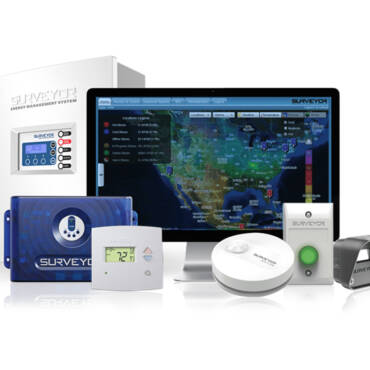In today’s landscape, onshoring isn’t just a trend—it’s a competitive weapon. The onshoring trend in U.S. manufacturing has gained significant traction, particularly as U.S. companies seek to reduce their dependence on overseas production due to rising tariffs and supply chain disruptions. This shift presents a unique opportunity for parts manufacturers that supply critical components to OEMs (Original seeking reliable, domestic production of parts and components to ensure consistent quality, reduce lead times, and avoid the costs associated with Equipment Manufacturers and oter industries. Companies are increasingly looking for reliable, domestic production of parts and components to ensure consistent quality, reduce lead times, and avoid the costs of international shipping and tariffs.
In this blog, we explore onshoring manufacturing benefits and how parts manufacturers can stand out in this growing market by focusing on operational efficiency, system efficiency, and commitment to quality and flexibility. By making the right strategic investments, parts manufacturers can become trusted suppliers in the onshoring movement.
The Rise of Onshoring: Key Drivers and Benefits
Onshoring, or bringing manufacturing back to the U.S., has been accelerating due to various factors. The primary driver has been the tariffs imposed on Chinese imports, which have made overseas production more costly. For instance, import tariffs from across the world continue to rise and fall, which has directly impacted the cost of parts and components, prompting many U.S. companies to consider bringing production back to domestic shores.
But tariffs are not the only reason. The desire for more localized manufacturing and sustainable manufacturing onshore solutions is also driven by the need for faster production cycles, reducing supply chain bottlenecks, and protecting intellectual property. With onshoring, manufacturers gain more control over production timelines and quality, which is vital for OEMs relying on parts to meet strict customer demands.
Benefits of Onshoring for Parts Manufacturers:
- Resilience and Risk Reduction: Minimizing risks in the supply chain is the number one way manufacturers can support their customers. Bringing supply chains and manufacturing onshore means being there for your customers faster than the competition.
- Cost Savings: By moving production back to the U.S., companies can avoid costly shipping fees and tariffs, making local sourcing more attractive.
- Better Control: Onshoring allows companies to manage production timelines and quality control better, ensuring that critical parts meet the required standards.
- Reduced Lead Times: With production closer to home, manufacturers can reduce the time it takes to deliver parts, meeting OEMs’ just-in-time needs.
- Supply Chain Security: Onshoring mitigates risks associated with international disruptions, such as port congestion, trade disputes, and natural disasters that can affect overseas suppliers.
How Local Parts Manufacturers Can Win Business from OEMs in a Shifting Market
With the rising trend of onshoring, OEMs are increasingly looking for local parts manufacturers who can provide faster delivery times, cost-effective solutions, and reliable quality. Established manufacturers, as well as those relocating to take advantage of onshoring, have an opportunity to differentiate themselves by focusing on key factors that help them become more competitive than overseas suppliers. Here are some strategic ways local manufacturers can position themselves to win business from OEMs:
1. Operational Efficiency: Maximize Output and Minimize Waste
In today’s competitive manufacturing landscape, efficiency is critical. OEMs are looking for partners who can meet high demand and deliver products quickly, without sacrificing quality. By improving operational efficiency, manufacturers can increase output while reducing costs, making them more attractive to OEMs who are under pressure to stay competitive and keep production costs down.
- Automation: Implementing automation increases throughput, reduces labor costs, and minimizes waste.
- Preventative Maintenance: Ensuring process and production equipment are running efficiently will reduce costs and downtime.
- Scalability: Ensure that your operations are scalable to handle both small and large orders without interruption, allowing for flexibility and agility in meeting OEM needs.
Efficient operations enable manufacturers to respond quickly to fluctuating demand, ensuring that they can deliver high-quality parts on time and at competitive costs.
2. Commit to Rigorous Quality Control: Build Trust Through Consistency
Quality control is essential for establishing a reliable reputation with OEMs, who depend on manufacturers to supply parts that meet stringent specifications and standards. A commitment to quality ensures that parts meet OEM specifications, reducing defects, delays, and costly rework. Trust and reliability are crucial to maintaining long-term business relationships.
- Automated Quality Checks: Implement systems that automatically monitor and verify part quality throughout the production process.
- Certifications: Pursue industry certifications (e.g., ISO, AS9100) to demonstrate your commitment to meeting the highest standards.
- Rigorous Testing: Ensure parts undergo thorough testing to confirm compliance with OEM requirements.
Manufacturers who demonstrate consistent quality control can position themselves as dependable partners, helping OEMs reduce downtime and maintain high production standards.
3. Flexibility and Customization: Stand Out as a Solution Provider
OEMs value flexibility and the ability to customize parts to fit specific needs. Manufacturers who can adapt to shifting production requirements have a clear competitive advantage. OEMs need suppliers who can quickly adjust to changes in production schedules, custom specifications, or varying order sizes. Flexibility is crucial for manufacturers to stay relevant in an ever-changing market.
- Tailored Solutions: Offer the ability to customize parts, including unique designs or materials, to meet the specific requirements of each OEM.
- Quick Response to Changes: Be ready to quickly adjust to fluctuations in order volumes, product specifications, or delivery schedules.
- Agile Production Lines: Invest in production systems that can easily adapt to changes, ensuring that you can handle both small and large orders without delays.
Being flexible and offering customized solutions ensures that local manufacturers can meet the dynamic needs of OEMs, making them more likely to secure ongoing business.
4. Sustainability: Align with Growing Environmental Standards
As environmental responsibility becomes more central to business operations, manufacturers who prioritize sustainable practices will have an edge in attracting environmentally conscious OEMs. Sustainability is increasingly a requirement for OEMs looking to meet their own environmental goals. By incorporating sustainable practices, local manufacturers can align with the broader movement toward greener manufacturing.
- Energy-Efficient Manufacturing: Invest in energy-efficient equipment to lower energy consumption and reduce environmental impact.
- Sustainable Materials: Use eco-friendly materials or recycling methods to attract companies focused on sustainability.
- Green Certifications: Obtain and promote environmental certifications such as LEED or Energy Star to show your commitment to sustainable practices.
Manufacturers who incorporate sustainable practices can appeal to OEMs aiming to reduce their carbon footprints and align with environmental standards.
5. Customer Experience: Build Long-Term Relationships
Providing an excellent customer experience is essential to securing long-term contracts and building strong, trustworthy relationships with OEMs. It’s not just about delivering parts on time—it’s about providing exceptional service at every touchpoint. A positive customer experience fosters loyalty and trust, making it more likely that OEMs will return to local manufacturers for future business.
- Proactive Communication: Keep OEMs informed with regular updates on order status, production timelines, and any potential issues.
- Comprehensive Support: Provide ongoing support, troubleshooting, and technical assistance to ensure that OEMs get the most from their parts.
- Efficient Ordering & Delivery: Streamline the ordering and delivery process to ensure timely and accurate fulfillment.
By delivering excellent customer service, local manufacturers can create long-lasting relationships that set them apart from overseas competitors.
7. Build a Strong Brand Reputation: Position as a Trusted Partner
Reputation plays a crucial role in attracting new business. OEMs want to work with manufacturers they can trust to consistently deliver high-quality parts on time. A strong, trustworthy brand reputation can make local manufacturers stand out in a crowded market, helping to win both initial business and long-term contracts.
- Showcase Success Stories: Use case studies and testimonials to highlight your ability to meet OEM needs and deliver high-quality results.
- Transparency: Be open about your manufacturing processes, capabilities, and challenges. Transparency builds trust.
- Certifications & Awards: Promote any industry certifications or awards you’ve received to further bolster your credibility.
By establishing a reputation for reliability and quality, local manufacturers can position themselves as trusted, go-to partners for OEMs.
Positioning Yourself for Success in Onshoring
The onshoring trend presents a significant opportunity for parts manufacturers. Local manufacturers can stand out in a growing market by focusing on operational efficiency, system efficiency, quality control, customization, and sustainability. As OEMs and other manufacturers look to reduce their dependence on overseas suppliers, they will increasingly turn to trusted domestic suppliers for their parts and components needs.
Local parts manufacturers have a unique opportunity to capitalize on the onshoring trend by focusing on key factors that can help them stand out in a competitive market. By emphasizing operational efficiency, quality control, flexibility, sustainability, customer experience, and the long-term value of local sourcing, manufacturers can position themselves as key players in the evolving OEM landscape. With the right strategies in place, manufacturers can successfully win business from OEMs looking for cost-effective, reliable, and sustainable solutions.
Click here to learn how Goodway solutions can help you achieve your success in onshore manufacturing.
Whether you require installation, repair, or maintenance, our technicians will assist you with top-quality service at any time of the day or night. Take comfort in knowing your indoor air quality is the best it can be with MOE heating & cooling services Ontario's solution for heating, air conditioning, and ventilation that’s cooler than the rest.
Contact us to schedule a visit. Our qualified team of technicians, are always ready to help you and guide you for heating and cooling issues. Weather you want to replace an old furnace or install a brand new air conditioner, we are here to help you. Our main office is at Kitchener but we can service most of Ontario's cities
Source link


